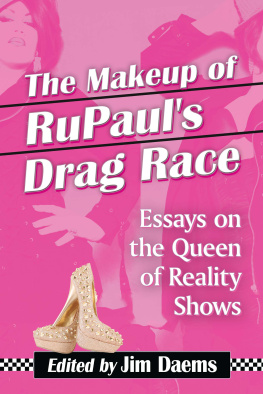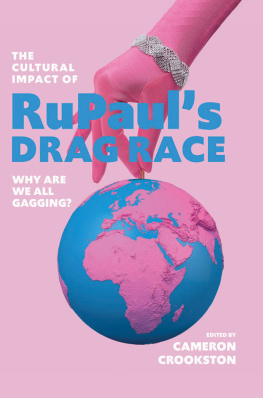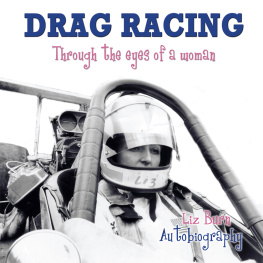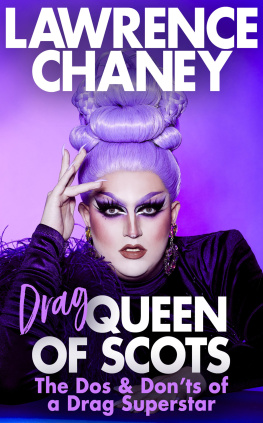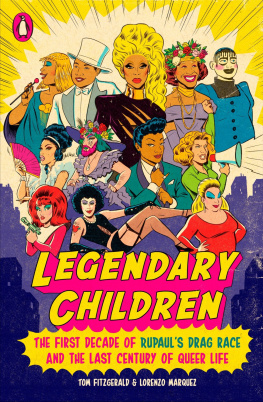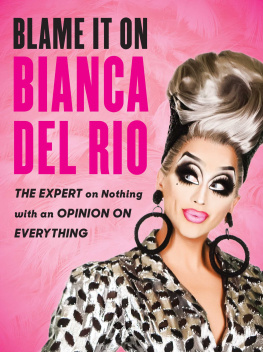
The Makeup of RuPauls Drag Race
Essays on the Queen of Reality Shows
Edited by Jim Daems

McFarland & Company, Inc., Publishers
Jefferson, North Carolina
LIBRARY OF CONGRESS CATALOGUING DATA ARE AVAILABLE
BRITISH LIBRARY CATALOGUING DATA ARE AVAILABLE
e-ISBN: 978-1-4766-1886-9
2014 Jim Daems. All rights reserved
No part of this book may be reproduced or transmitted in any form or by any means, electronic or mechanical, including photocopying or recording, or by any information storage and retrieval system, without permission in writing from the publisher.
Front cover images 2014 iStock/Thinkstock
McFarland & Company, Inc., Publishers
Box 611, Jefferson, North Carolina 28640
www.mcfarlandpub.com
Preface
This book is a critical examination of RuPauls Drag Race (with some attention paid to its spin-offs, Drag U and Untucked!). Although the essays collected here approach this reality TV show from a variety of academic perspectives, I do believe that the book is accessible to a wider popular readership. The RuPaul franchise is important both in terms of putting drag on TV and the wider socio-political contexts that it engages with. Certainly, we can see the program as a sign of wider tolerance of LGBTQ people in North America, even if it runs on specialty channels aimed at an LGBTQ audience (Logo in the U.S., OUTtv in Canada). However, we cannot avoid the more negative socio-political aspects that still impact the program and the lives of LGBTQ people, particularly the ongoing struggle for equal civil rights such as same-sex marriage, the violence faced by trans people, and day-to-day trans- and homophobia. We also cannot ignore the larger world picture in which homosexuality continues to be or is being criminalized and LGBTQ people are actively hunted and terrorized in countries such as Uganda and Russia. The program is, then, a progressive step in terms of visibility and engagement with some of the important issues faced by its LGBTQ audience and its allies.
This project began with my interest as a fan of RuPauls Drag Raceand not only from a queer perspective, but also because the show continues to be a fabulous camping of tired reality TV genres. Even when we are, as academics, critical of aspects of the program, I believe that for all the contributors gathered here, an underlying enjoyment as fans of RuPauls Drag Race motivates our readings of the program.
Introduction
RuPauls Ambivalent Appropriation of Pop Culture
Jim Daems
Premiering in February 2009, RuPauls Drag Race quickly became Logo TVs biggest hit and revitalized RuPauls career. Currently in its sixth season, and renewed for a seventh, Drag Race has been nominated for a number of television awards and has won, for example, Most Addictive Reality Star (Ongina in 2009 at the NewNowNext Awards), Outstanding Reality Program (2009 GLAAD Media Awards), Best Reality Competition Series and Best Reality Show Judge (2012 TV.com Awards). In a 2008 pre-series publicity interview with Perez Hilton, RuPaul jokingly stated of the show,
Tell Tyra [Banks] that the Queen has returned, and while youre at it have Heidi [Klum] clear the runway. Im going to pump some realness into reality. To be a winner on this show the contestants need to be a fashion designer, an American Idol, and a top model all rolled up into one. And they definitely have to be smarter than a fifth grader.
This statement neatly encapsulates Drag Race as a mix of reality TV subgenres that have so effectively contributed to the programs success. Writing in The New Yorker, Emily Nussbaum, for example, recognized that Drag Race effectively parodies and explicitly queers Project Runway which was already the gayest thing in town.
The premise of Drag Race is to find Americas Next Drag Superstar. At the beginning of each episode, contestants face a mini-challenge (an assigned task with little or no preparation time). Winning the mini-challenge often gains a contestant an advantage in the main challenge (such as first pick of teammates or of wardrobe items). The main challenge is followed by the contestants facing a more elaborate task with a longer preparation time. During the two challenges, RuPaul appears in a mans suit, male drag, chats with contestants, and gives them advice on what they are planning for the main challenge. Like RuPaul in the first two segments, the contestants are seen primarily in male clothing or in various stages of drag transition preparing for the challenges. This very explicitly presents their transformations from male to queen for viewers and can be seen as highlighting the way gender works in our culture. But it can also highlight the way in which those very gender constructs can be subverted. In addition, when he announces the first mini-challenge, RuPaul tells the contestants, Gentlemen, start your engines. And may the best woman win! Examining this phrase helps us understand that the audience (and the contestants) should view the participants gender as both male and female depending on the situation or context. Eir-Anne Edgar adds that the judging criteria RuPaul announces before the first challenge begins further destabilize gender binaries:
Judges will be looking for their [the contestants] Charisma, Uniqueness, Nerve and Talent, their C.U.N.Ts, if you will. While on stage, the Queens need to make sure that their C.U.N.Ts are present for the judges to rate. The articulation of femininities (and the contestants metaphorical cunts) helps us see that gender is situational; its display in the context of this show spills over socially constructed demarcated binaries that separate man from woman.
While this catchphrase, one of many on Drag Race, does destabilize gender binaries, it has been seen by some as misogynistic. Others have noted that the video She Mail announcement to the contestants at the beginning of the program, in conjunction with the above catchphrase, can also be read as misogynistic and transphobic. Indeed, a recent mini-challenge where the contestants were shown a picture of part of a body and asked to decide whether the person was female or she-male prompted a significant amount of criticism. This led to the following apology on the RuPauls Drag Race Facebook page:
We wanted to thank the community for sharing their concerns around a recent segment and the use of the term she-mail on Drag Race. Logo has pulled the episode from all of our platforms and that challenge will not appear again. Furthermore, we are removing the Youve Got She-Mail intro from new episodes of the series. We did not intend to cause any offense, but in retrospect we realize that it was insensitive. We sincerely apologize.
A number of essays collected here will address these issues.
The program then culminates in a runway presentation judged by RuPaul, now in female drag, and a celebrity panel of judges that include regulars Michelle Visage and Santino Rice and two guest judges (these range, for example, from Lady Bunny to Chaz Bono and LaToya Jackson to Henry Rollins). The winner of the week is announced, and the two queens that are judged to have performed the most poorly through the challenges and the runway presentation are put head-to-head in a Lip Sync for Your Life performance. The loser is then eliminated and sashays away. This continues until there are three remaining contestants of which one will be judged Americas Next Drag Superstar. In addition, each episode is interspersed with candid comments by contestants about themselves and their competitors.
Next page
